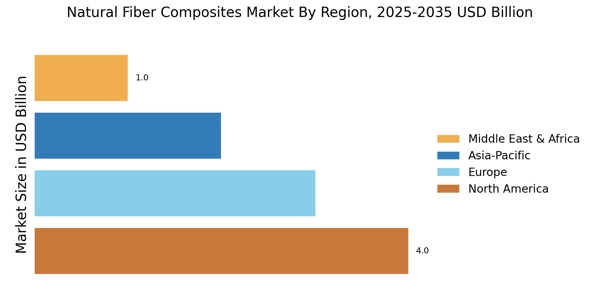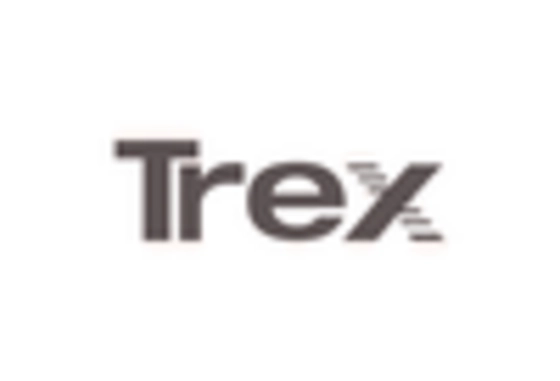Regulatory Support
Regulatory frameworks promoting the use of sustainable materials are significantly influencing the Natural Fiber Composites Market. Governments worldwide are implementing policies that encourage the adoption of eco-friendly materials in manufacturing processes. These regulations often include incentives for companies that utilize renewable resources, thereby fostering a favorable environment for the growth of natural fiber composites. Market data indicates that regions with stringent environmental regulations are experiencing a faster adoption rate of natural fiber composites, particularly in the automotive and construction industries. This regulatory support not only drives demand but also encourages manufacturers to invest in the development of innovative natural fiber composite solutions, thereby enhancing the overall market landscape.
Consumer Preferences
Shifting consumer preferences towards sustainable and biodegradable products are driving the Natural Fiber Composites Market. As awareness of environmental issues grows, consumers are increasingly seeking products that align with their values. This trend is particularly evident in sectors such as packaging, automotive, and consumer goods, where the demand for natural fiber composites is on the rise. Market data reveals that approximately 60% of consumers are willing to pay a premium for products made from sustainable materials. This shift in consumer behavior is prompting manufacturers to explore the incorporation of natural fiber composites into their offerings, thereby expanding the market. The Natural Fiber Composites Market is thus likely to experience robust growth as companies respond to these evolving consumer demands.
Diverse Application Areas
The versatility of natural fiber composites is emerging as a significant driver for the Natural Fiber Composites Market. These materials are being utilized across a wide range of applications, including automotive, construction, and consumer products. The ability to tailor the properties of natural fiber composites to meet specific requirements makes them an attractive option for manufacturers. Market data indicates that the automotive sector is expected to account for a substantial share of the natural fiber composites market, driven by the need for lightweight and sustainable materials. Additionally, the construction industry is increasingly adopting these composites for their insulation and aesthetic properties. This broad applicability is likely to propel the Natural Fiber Composites Market forward, as more sectors recognize the benefits of integrating natural fiber composites into their products.
Technological Innovations
Technological advancements are playing a crucial role in shaping the Natural Fiber Composites Market. Innovations in processing techniques and material formulations are enhancing the performance characteristics of natural fiber composites, making them more competitive with synthetic alternatives. For instance, advancements in fiber treatment and composite manufacturing processes have led to improved mechanical properties and durability. Market data suggests that the introduction of new technologies could potentially increase the market share of natural fiber composites by up to 15% in the automotive and construction sectors. As industries continue to invest in research and development, the Natural Fiber Composites Market is likely to witness a surge in innovative applications, further driving demand and expanding its reach across various sectors.
Sustainability Initiatives
The increasing emphasis on sustainability appears to be a primary driver for the Natural Fiber Composites Market. As consumers and manufacturers alike become more environmentally conscious, the demand for eco-friendly materials is surging. Natural fiber composites, derived from renewable resources, offer a viable alternative to traditional synthetic materials. This shift is reflected in market data, which indicates that the natural fiber composites segment is projected to grow at a compound annual growth rate of approximately 10% over the next five years. Companies are increasingly adopting sustainable practices, which not only enhance their brand image but also align with regulatory requirements aimed at reducing carbon footprints. The Natural Fiber Composites Market is thus positioned to benefit from this trend, as businesses seek to innovate and incorporate sustainable materials into their product lines.


















Leave a Comment